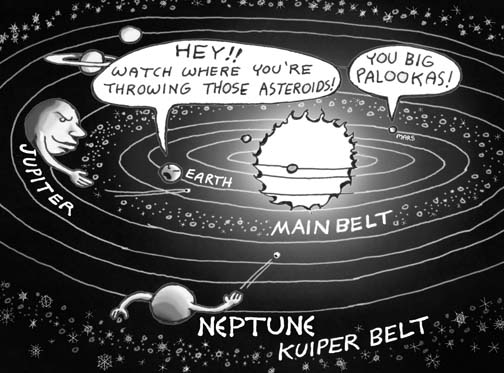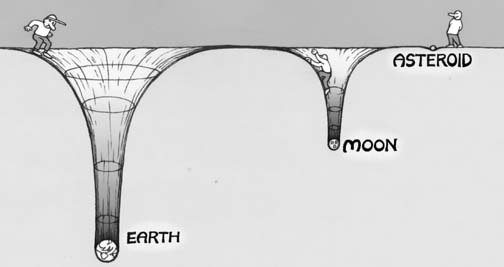Real estate is measured in surface area, not volume.
The small bodies of our solar system offer thousands of times more area
than the rocky planets and big moons.

The Near Earth Asteroids are thought to be recent
arrivals from the Kuiper Belt or the Main Asteroid Belt
sent our way by Neptune and Jupiter.
-
Coming from colder places they are more likely
to have water and other volatiles.
-
Metallic asteroids are thought to come from the cores of
bodies large enough to have differentiated layers.
These asteroids have nickel, iron, and platinum group metals
in much richer concentrations than are typically found on planet surfaces.

-
Surprisingly enough, small bodies in orbit around a big gravity well are easier to reach. The Oberth effect makes it easier to match velocities with a small moon orbiting a planet. If the planet has an atmosphere, aerobraking can also be used to shed velocity.
-
If asteroids were placed in orbits about Venus, Mars, and Earth, they would be more accessible than bodies freely orbiting the sun. It also simplifies the logistics of supplying colonies: It's much easier to supply a hundred orbital colonies in the same neighborhood than it is to supply a hundred widely scattered locations.
-
Capture Orbits
If an asteroid already happens to be close to Venus, Earth or Mars, it takes relatively little delta vee to place it in a capture orbit about the planet. However a capture orbit has a periapsis (the closest point in the orbit to a planet) very close to the earth's surface. A small mistake could have horribly catastrophic consequences. Cargo captured to earth orbit should be small enough it would harmlessly burn up in case of a mishap. Tunguska sized or larger cargo should be prohibited.
-
Parking larger objects in Capture orbits about Venus and Mars
incurs much less risk, as these places aren't populated.
-
The Case For Venus
Venus' synodic period with regards to earth is very close to 1.6.
The orbital period of a Earth-Venus Hohmann orbit is very close to .8
These two facts make a system of five Earth to Venus cyclers possible.
-
A system of five Highly Eccentric Venus Orbits (HEEVOs)
could have their periapsi correctly positioned
to receive incoming passengers from Earth.
-
In terms of delta vee, HEEVO habitats would be
among the closest to earth in the solar system.
-
Trip times would .4 Earth Years, about 5 months,
somewhat less than the 7 month Hohmann Mars trip.
-
Launch windows would be every 1.6 years,
more frequent than the Martian windows each 17/8 years.
Please see The Case For Venus.
-
Back To Delta Vee Map